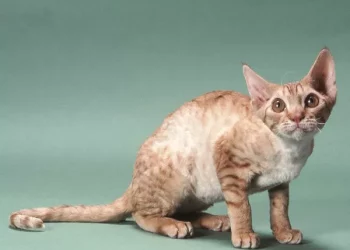The African Grey Parrot, renowned for its intelligence and remarkable ability to mimic human speech, is facing a perilous threat to its existence. Widespread poaching, habitat loss, and unsustainable trade practices have pushed this magnificent bird to the brink of extinction. This article delves into the current state of the African Grey Parrot population, shedding light on the factors contributing to its decline and the urgent need for conservation efforts to save this iconic species.
Understanding African Grey Parrots
The African Grey Parrot (Psittacus erithacus) is native to the rainforests of West and Central Africa. Recognized as one of the most intelligent bird species, these parrots possess exceptional cognitive abilities and a knack for imitating sounds, including human speech. Their striking gray plumage, red tail feathers, and expressive eyes make them highly sought after in the illegal pet trade.
Declining Population Numbers
Estimating the exact number of African Grey Parrots in the wild is challenging due to their elusive nature and vast habitat range. However, scientific evidence suggests that their population has significantly declined over the past few decades. The International Union for Conservation of Nature (IUCN) classifies the African Grey Parrot as “Endangered” on the Red List of Threatened Species.
Illegal Trade and Poaching
The illegal trade of African Grey Parrots represents a grave threat to their survival. These birds are highly valued as pets due to their remarkable vocal abilities, leading to widespread poaching and smuggling. It is estimated that between 2,000 to 5,000 parrots are poached from the wild each year, primarily for the exotic pet trade in Europe, North America, and Asia. The harsh conditions of capture and transportation often result in high mortality rates, further exacerbating the decline of the species.
Habitat Loss and Fragmentation
Deforestation and habitat loss have had a devastating impact on African Grey Parrot populations. Logging, agricultural expansion, and urbanization have encroached upon their natural habitats, leaving these birds with limited resources for foraging, nesting, and breeding. The destruction of old-growth forests and the conversion of their habitats into farmland have disrupted the delicate balance necessary for the survival of these parrots.
Reproductive Challenges
African Grey Parrots are slow to reproduce and have low reproductive rates, which exacerbates their vulnerability. They reach sexual maturity around the age of 4-5 years, and breeding pairs typically produce only one or two offspring per year. The loss of nesting sites and the increased pressure from poaching make it even more challenging for the species to recover their numbers.
Conservation Efforts and Legislative Measures
International and local organizations are working diligently to protect the African Grey Parrot and reverse the decline of its population. Conservation initiatives focus on raising awareness, strengthening law enforcement against illegal trade, supporting sustainable community livelihoods, and promoting captive breeding programs. Additionally, international agreements such as the Convention on International Trade in Endangered Species of Wild Fauna and Flora (CITES) aim to regulate and control the trade of African Grey Parrots and their products.
Community Involvement and Education
Engaging local communities in conservation efforts is crucial for the long-term survival of the African Grey Parrot. Encouraging sustainable alternatives to poaching, providing education on the importance of preserving these birds and their habitats, and empowering communities to protect their natural resources are essential steps in fostering a sense of stewardship and coexistence.
The Way Forward
Preserving the African Grey Parrot requires a comprehensive approach involving governmental cooperation, international collaboration, and public awareness. Combating illegal trade, protecting critical habitats, promoting sustainable practices, and supporting scientific research are vital for the species’ survival. Additionally, responsible pet ownership, with a focus on adopting rather than purchasing parrots, can help reduce demand and illegal trade.
Conclusion
The African Grey Parrot, an emblem of intelligence and beauty, is facing a dire threat to its existence. Illegal trade, habitat loss, and limited reproductive capabilities have led to a significant decline in their population. Urgent and concerted efforts are needed to combat poaching, protect their habitats, and raise awareness about the importance of conserving this iconic species. Only through global collaboration and a collective commitment to their preservation can we secure a future where African Grey Parrots continue to enchant us with their intelligence and beauty for generations to come.
Recommended reading:

























